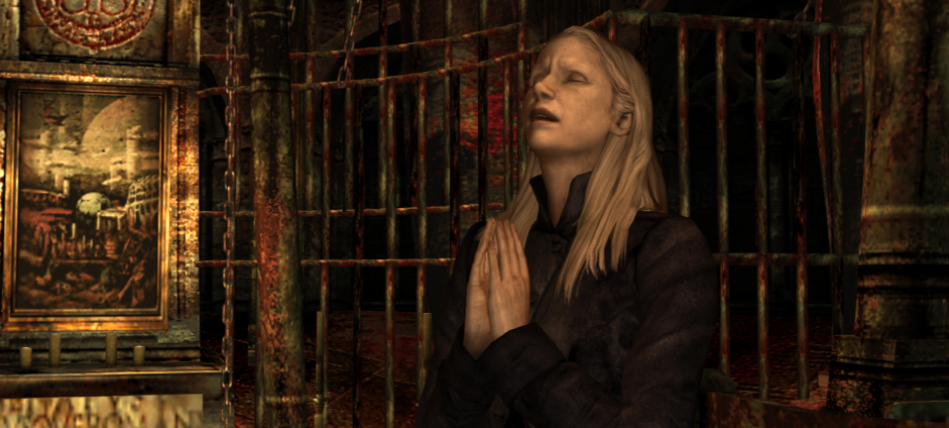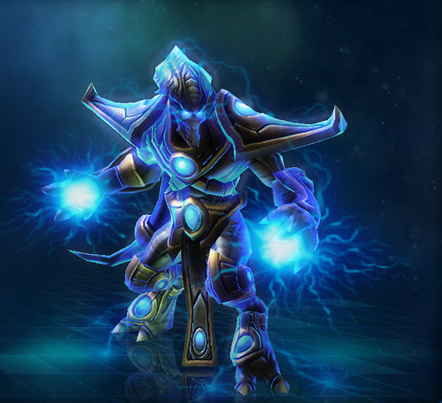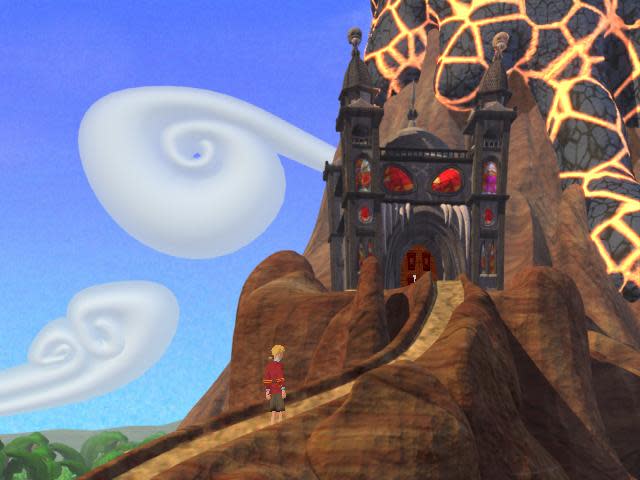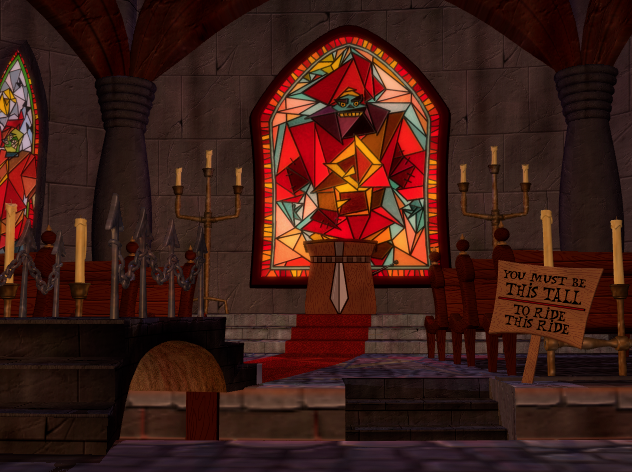Religion usually gets a pretty bad rap in video games. They’re a pretty modern medium made by a generation that made a point of being irreverent towards organized religion, so when you encounter the faithful in games, it’s quite often in the guise of creepy cults or sinister conspiracies.
On the other hand, the strong influence of Dungeons and Dragons also means that gamers often have to turn to some kind of clerical or priestly figure for beneficial effects like healing and buffing. In other games, the player character might themselves to be some kind of messiah figure, or on a mission from the gods—in Kratos’ case, to kill them.
Whether as friend, foe, or something in between, gamers will encounter a lot of different religions in their exploits. But do any of them have any good theological points to make?
Here are a handful of video game faiths that offer some interesting answers to our existential angst:
The Brotherhood of Nod (‘Command And Conquer’)
The Brotherhood of Nod faction in the Command And Conquer RTS series is the full package deal. Not just a religion, Nod also functions as an army, a corporation, and a worldwide military totalitarian state. Confused about your purpose in life? Nod will give you something to fight for. They’ve got syncretic Abrahamic pedigree dating back thousands of years, blending aspects of Judaism, Islam, and Christianity.
Nod also have a bitchin’ scorpion tail symbol and a badass gothic-meets-Soviet style. Ok, so they’re generally painted as the bad guys in Command and Conquer, but they do have a point about GDI lying to the people about Tiberium and unfairly hoarding power and resources. Plus, The Brotherhood are the only faction that provide for the ordinary people in Earth’s troubled ‘Yellow Zones’

On top of all this, they’ve an asset in their great charismatic leader, the apparently immortal Kane (literally the Cain from the Bible). Through Nod, Kane offers an alternate society to the poor and downtrodden who feel hard done by under the GDI’s world order.
It also helps that Kane seems to be legitimately superhuman, coming back from the dead several times. As the history of real life religion shows us, that kind of trick can be very, very inspiring.
The generically named faith behind the supernatural goings-on in the Silent Hill franchise may not sound that appealing, but hear me out.
The Order (‘Silent Hill’)

Followers of The Order worship entities from the Otherworld with an aim to bring about an apocalypse to purify the Earth. Although the followers of The Order encountered in the games are often villains, others are presented as more sympathetic. Generally, they believe the ends justify the means, and are willing to conduct crime, violence and even child abuse to further their goals and bring about paradise.

The actual beliefs are focused around a solar goddess and appear to be inspired by the religion of the (fictional, it must be stressed) Native Americans who originally inhabited the area of Silent Hill. Throughout the games, various sects and myths about The Order are revealed, which incorporates elements of Occultism and Gnosticism.
The thing is, for all their morally questionable methods and convoluted ritual, they’re not wrong about those supernatural creatures from the Otherworld. They exist, they’re connected with humanity and our fears and sins, and they’re up to something, granting powers to their followers.
If you lived in the Silent Hill universe and found all this out, wouldn’t you sign up with the only people that seem to understand what the hell is going on?
The Khala (‘StarCraft’)

Humanity is plagued by wars and strife over our different beliefs, but there’s also the problem with a lack of empathy. If we could somehow all be connected together, share our innermost thoughts and feelings, wouldn’t we be better equipped to get along?
That’s what happened with the Protoss, a race of psychic aliens that were locked in bloody tribal struggle for much of their history until they formed The Khala (“Path of Ascension”), which joined all their minds into a communal psychic field. It sounds New-Agey (it even has magic crystals), but it works. The Khala strengthened the Protoss’ psychic powers and allowed for mass mental communication.

Each Protoss retained their individuality but could tune into a communal empathic link. This helped them forge a peaceful and powerful society, all working together, but some were unwilling to run the risk of losing their privacy and refused to join, becoming exiles.
The unity of the Khala becomes a liability in the plot of Legacy of the Void, when it is ‘hacked’ by a powerful enemy, and the Protoss are forced to sever the nerve cords that connect them to the Khala.
The storyline highlights the dangers of collectivism, but the idea of the Khala certainly has its appeal. Maybe people would stop hurting each other so much if we had a real empathic link with our fellows. Plus we also get cool psychic powers? Sign me up.
The First Church of LeChuck… Orthodox (‘Escape From Monkey Island’)

The ghost pirate (or pirate ghost?) LeChuck is the primary antagonist of the Monkey Island games, and being a ghost, he knows a thing or two about the afterlife. In the series’s Escape From Monkey Island one of his many murder victims (also a ghost) recognizes this and erects a church in his honor.
The church is ran by a priest called Allegro Rasputin who writes a bible which Guybrush dubs ‘the most unholiest of bibles’. One unusual feature of the Church is their marriage rite. There’s a river of lava flowing through the church, and the couple should take a boat ride and… die. Then, they can marry as ghosts. Kind of like the opposite of ’til death do us part’.

This is a problem for Monkey Island protagonist Guybrush Threepwood, as he is the religion’s figure of evil, the Anti-LeChuck. The Church believes that LeChuck and Elaine should marry, and they ‘don’t recognize Elaine’s blasphemous marriage to the Anti-LeChuck.’
Guybrush obviously objects to the idea of Elaine taking a lava-ride, but when he points that he’s Anti-LeChuck the priest reminds him that ‘The Anti-LeChuck is three meters tall, has a prehensile tail, a forked tongue, and the number 1138 stamped on his forehead.’
The Church works as a gag, but it also makes perfect sense in the world of Monkey Island when you think about it. If you’re going to have a religion, might as well let the ghosts run it. They know what’s up, or indeed down.
Ormus (‘Xenosaga’)

According to the Xenosaga JRPG series, modern Christianity will evolve into Ormus, which is a kind of blend of Catholicism and Orthodox Christianity with elements of oriental philosophy, Gnosticism and Zoroastrianism.
Ormus is one of the more accurate depictions of Gnostic philosophy in fiction, but it’s also as corrupt as the historical Catholic church, hiding abuses and dark secrets within its hierarchy, and using militant orders to strongarm its way to power and influence.
But as far as video game religions go, Ormus is plausible as an evolution of real life beliefs and despite its secrets, has a well-thought out theology. During the course of the game the player will find themselves questioning the validity and morality of Ormus as they learn more about its mysteries, and whichever side you take in the end, it remains one of the series’ most fascinating ideas.
The Tribunal (‘The Elder Scrolls: Morrowind’)

The Elder Scrolls game has some seriously convoluted lore, especially when it comes to the gods. The games generally hint at a dualistic system, with good Aedra and bad Daedra, but anyone who plays the games gets to see that it’s really not that simple.
Leaving the Aedra and Daedra aside, the story of Morrowind showed us an alternative faith. The Tribunal of Morrowind are a trio of three mortals who stole divine tools to make themselves into living gods, the divine rulers of their race.
The Tribunal make for effective rulers up to a point, but the cataclysmic threat in the game’s plotline means that the player will be involved in their undoing. Nonetheless, the player will find that they accomplished a lot for their people, and actually laid out some convincing philosophy that didn’t depend on the famously unreliable Aedra and Daedra spirits.

In fact, one particular Tribunal member, Vivec, stands out, and the warrior-poet-king has developed a level of enlightenment so deep that it’s implied he’s actually figured out that he’s a character in a video game, and uses this secret knowledge to manipulate the game world.
Given how fickle and cagey the real gods can be in The Elder Scrolls games, I had to hand it to Vivec as being most reasonable and relatable divine entity in the whole series. Not bad for a guy who worked his way up from being a mere mortal.
Matters Of Faith
Video games might actually be one of the better types of media for exploring matters of religion, because they can allow for rich lore and complex decision making on behalf of the player.
This doesn’t mean that there aren’t a lot more shallow examples of video game religions out there, but the best ones aren’t just caricatures of real-life religions. They can make us think about how spirituality could work in the game world, and maybe even question a few of our beliefs about our own lives.
Ever encountered a video game religion that you thought made some good points?
This article originally appeared on video games magazine site NowLoading.co. The site is no longer online, but I’ve uploaded a few articles from my time as a staff writer there (2016-2017) here as portfolio samples.
